I’d like to welcome you to our first edition of This Week In TIME, a weekly review of moments in history that were covered in old TIME magazines. TIME is an enduring publication that has covered world events for over 100 years. Many of the covers are immediately identifiable and stand out as iconic images from years gone by. However, there is much more beyond the surface that serves as snapshots of important historical events in time. These magazines reflect the way events were perceived and reported as they happened.
This week we explore the pages of the issue from December 29, 2003 which may seem to be fresh in our memories, but is already over twenty years ago.
Each week we will summarize select articles from past issues of TIME magazine, which can be found in our shop at PFTPAntiques.
portrait of a platoon
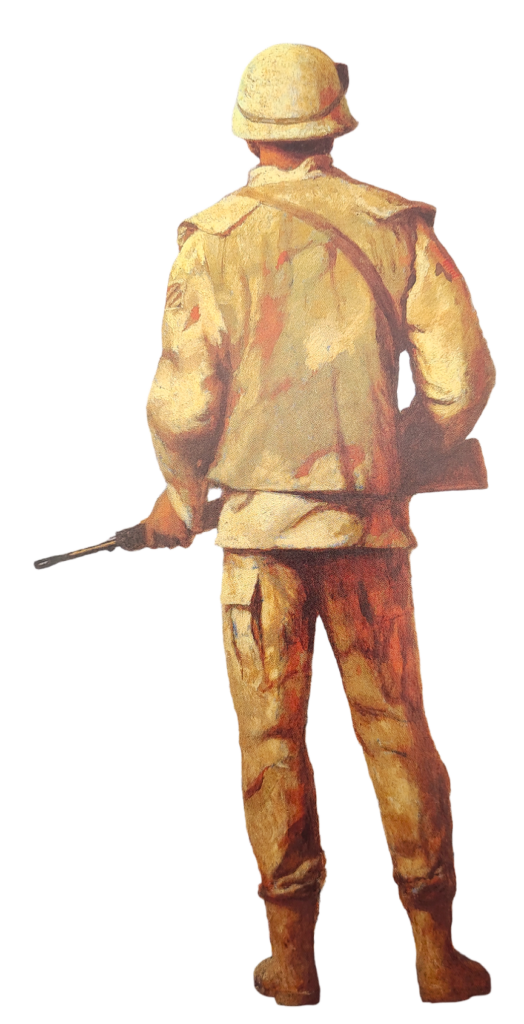
At a time when it was thought that American men and women at arms may soon make it safely home, TIME followed a single platoon to see what it costs to bring peace through war. As a volunteer service, the american military had over 1.4 million members actively serving in over 146 countries at the time of this publication.
In Iraq the military was initially told they would be there for six months, but six months turned into a full year. They had to improvise constantly to adapt to new and unexpected challenges.
In Baghdad two TIME reporters were riding along as members of the platoon conducted a patrol intended to draw out insurgents. As the convoy returned, it was slowed down by traffic and an oval object was thrown through the window of the second vehicle. Before anyone could react, the object exploded. Several members of the convoy were injured by the explosion and shrapnel. They sustained injuries such as, a broken leg, lost teeth, and a lost hand.
These soldiers were not prepared or trained for this type of warfare. It was not a traditional battle against an opposing uniformed force. As one soldier put it “It is like Groundhog Day” he said “It’s the same thing every day. You just don’t know whether you’re going to live or die”.
There was a different dynamic back at the compound. The group consisted of members from various ethnic and cultural background and they were brought together by circumstance. Living in cramped quarters was an adjustment and here they functioned more like a disfunctional family. Each soldier navigated their own way through separation from their loved ones. Privacy, interbet, and phone access were limited and there was the unfamiliar challenge of what to say when they did communicate with people back home. It seemed that most took the same approach of telling their loved ones general information about their experiences but refrained from giving them specific details.
Throughout the article the soldiers expressed doubt about if they were actually making a difference, if their presence was going to accomplish anything, and if it was worth suffering through the losses. They had little doubt about their mission or their plan of action, but they were concerned about the Iraqi population’s willingness to accept change.
People Who Mattered 2003
Looking back in time, we discover exceptional people and extraordinary events, that stand out as having made a difference. In 2003 TIME identified the following as personalities who made a difference:
Arnold Schwarzenegger – In the race to be California’s Governor there were initially 250 candidates. The class of candidates included a porn star, Gary Coleman and the Terminator himself. Arnold Schwarzenegger won over voters and inspired a 20% increase in voter turnout. By October 8, 2003 he stood alone as the new Governor of California.
Tony Blair – The Prime Minister’s popularity decreased due to his support of the war in Iraq. Protesters marched outside 10 Downing Street and claimed Blair was following along as the Americans directed. However, Prime Minister Blair stated that he believed in the war. When Saddam was captured, he stated it was a time to celebrate and unify.
Jiang Yanyong – SARS hit China in 2002, it was subject to a cover up. When U.N. health officials visited in April 2003 there was an effort to conceal the truth by emptying hospital wards. Jiang Yanyong was a retired Army doctor who couldn’t stand by any longer. He reached out to TIME and other news agencies to expose the truth.
Frank Gehry – He designed the Walt Disney Concert Hall in Los Angeles. The concert hall would become home to the L.A. Philharmonic, and became a L.A. landmark.
Kim Jong Il – The North Korean leader was a growing concern for Washington. TIME speculated that although Washington was trying to be diplomatic, Kim Jong Il did not appear to be a man who could be persuaded to dismantle his nukes.
Vladimir Putin – In 2003 the Russian President swept the December elections by margins which led observers to believe the elections were fixed. Coincidently, a tycoon who was funding Putin’s political rivals was arrested.
Howard Dean – He started the year as a relatively unknown former Governor, but through his anti-war talk and fundraising skills, Dean gave new life to his party. Howard Dean’s efforts resulted in a change to American politics in 2003.
L. Paul Bremer – Mr. Bremer was head of the Coalition Provisional Authority and responsible to try and help Iraqis rebuild while protecting U.S. political, security and commercial interests. In December 2003 he announced that Saddam Hussein had been captured.
The Year in buzzwords
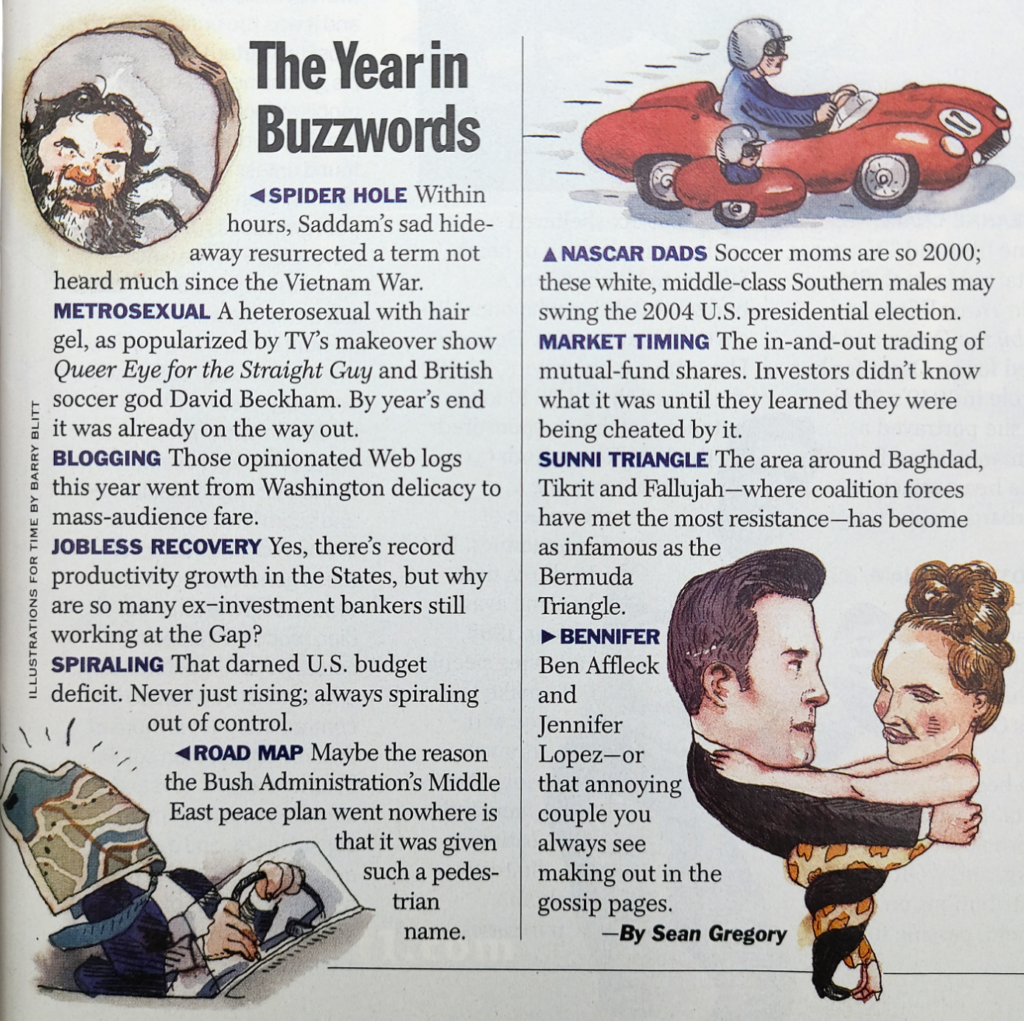
Notable people who passed away in 2003
- Bob Hope – Comedian
- Dr. Robert Atkins – Populizer of the high protein, low-carb diet
- Daniel Patrick Moynihan – Senator, Ambassador and Harvard Professor
- Katherine Hepburn – Actress
- Elia Kazan – Director
- David Brinkley – Newscaster
- Althea Gibson – Wimbledon and U.S. tennis champion
- Idi Amin – Uganda President
- Gregory Peck – Actor
- John Ritter – Actor
- Gregory Hines – Dancer and Actor
- Edward Teller – Theoretical Physicist
- Strom Thurmond – Former Governor of South Carolina
- Madame Chiang Kai-Shek – Former first lady of the Republic of China
- Carol Shields – Author
- Johnny Cash – Singer
- Izzy Asper – Media Magnate
- Fred Rogers – Television Host
has the mainstream run dry?
In 2003, TV networks saw an 8% drop in ratings amongst viewers 18 – 49 years old. This may seem like a relatively small number, but the networks were reporting losses in the hundreds of millions of dollars. Clearly, they needed to determine the reasons behind their loss in viewership and what people were turning to as an alternative source of entertainment.
It seems that the new generation of young adults found their entertainment in video games, home movies, or other more “objectionable” content. In fact, this period of time was a significant transition in the way that the term “mainstream” could be interpreted. It was no longer a prescribed dose of a specific TV show, music album or other content pushed by a small group of mainstream suppliers. The concept of what was “mainstream” and how it became popular was changing with new means of accessing a wider range of content.
In a country made up of so many diverse cultural groups, there was a greater possibility to find content that fit one’s own interests. As a result, things like Harry Potter, that transcended individual interests to become mainstream, would do so only for the moment. After the initial excitement, the crowd was able to retreat back to their individual interests. Similar to a Flash Mob with everyone turning out to see what all the excitement was about before disappearing just as fast.
In the music industry, iTunes was now offering albums and individual songs for purchase. Customers now had the opportunity topick and choose individual songs instead of having to purchase whole albums. This offered consumers convenience, variety and the ability to explore new music.
In 2003, people were starting to find new ways to pursue their own individual interests when it came to entertainment. For the most part, this began to occur in endless virtual environments that would continue to evolve into the way we entertain ourselves today.
The Google guys
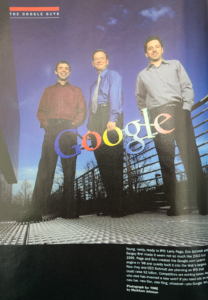 Larry Page, Eric Schmidt and Sergey Brin featured in this image are referred to as the “Google guys”. Google was created in 1998 and at this point had already become the largest search engine on the Web. As far back as 2003, if you wanted to know something, you would “Google” it. According to this article they were planning an IPO that could raise $2 billion.
Larry Page, Eric Schmidt and Sergey Brin featured in this image are referred to as the “Google guys”. Google was created in 1998 and at this point had already become the largest search engine on the Web. As far back as 2003, if you wanted to know something, you would “Google” it. According to this article they were planning an IPO that could raise $2 billion.
A little “Googling” reveals that the IPO occured August 19, 2004 at a valuation of $23 billion and now up to it’s current value of over a trillion dollars.
Top google searches by month in 2003
January – Joe Millionaire (fox TV hit debut)
February – NASA (the space shuttle Columbia blows up on Feb. 1)
March – Al-Jazeera (Gulf War II starts)
April – SARS (worldwide scare over the epidemic)
May – Matrix (Reloaded opens in the U.S. on May 15)
June – Harry Potter (a new volume-at last-hits stores at midnight, June 21)
July – Tour de France (Lance again)
August – MSBlast (computer virus strikes on Aug. 11)
September – Hurricane Isabel (rocks the U.S. East Coast on Sept. 18)
October – Halloween (scary stuff)
November – Paris Hilton (in the raw)
December – Christmas (an old reliable is the year’s No. 1 hit)
HP invent
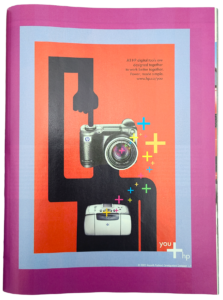
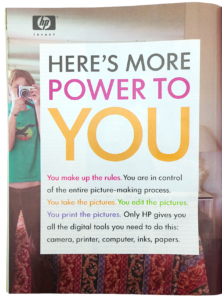 I added this advertisement because most of us recall taking photographs with our old cameras and then going in to the photo lab to have the film processed. Sometimes when you were hanging out waiting at the 1-hour photo you could see other people’s pictures as they run through the machine.
I added this advertisement because most of us recall taking photographs with our old cameras and then going in to the photo lab to have the film processed. Sometimes when you were hanging out waiting at the 1-hour photo you could see other people’s pictures as they run through the machine.
I’m not sure if I had this exact camera when I made the transition to printing at home. I did have something very similar and although I bought the equipment to print my own pictures, I usually ended up saving images to my computer. It was so liberating because I didn’t have to worry about the expense of film rolls and potential for waste when I could just delete and retake as many photos as I wanted. Now I have thousands of old pictures safely stored away on a hard drive and I can access them anytime. This is far better than the hundreds of old physical photo packs stored away in a box where I rarely look at them. It is safer and takes up far less storage space.
Who would have thought back then that all our music, entertainment, communication and photos would be integrated into a cell phone!
What do you think?
Our purpose for this initial post to This Week In TIME is to provide a fun introduction to what we hope will be a long running informative series. We are reading about events from the perspective that a reader of TIME magazine would have had upon receipt of their newly published issue. Follow us here at This Week In Time or explore our shop Presents From The Past Antiques (PFTPAntiques) to start your own journey through time. Next week we will look at the January 5, 1981 issue with newly elected President and Man of the Year Ronald Reagan on the cover.
We would love to here from our readers about their own memories from this time. What do you remember about the events covered? How does it make you feel when thinking about how things have progressed in the last 20 years?
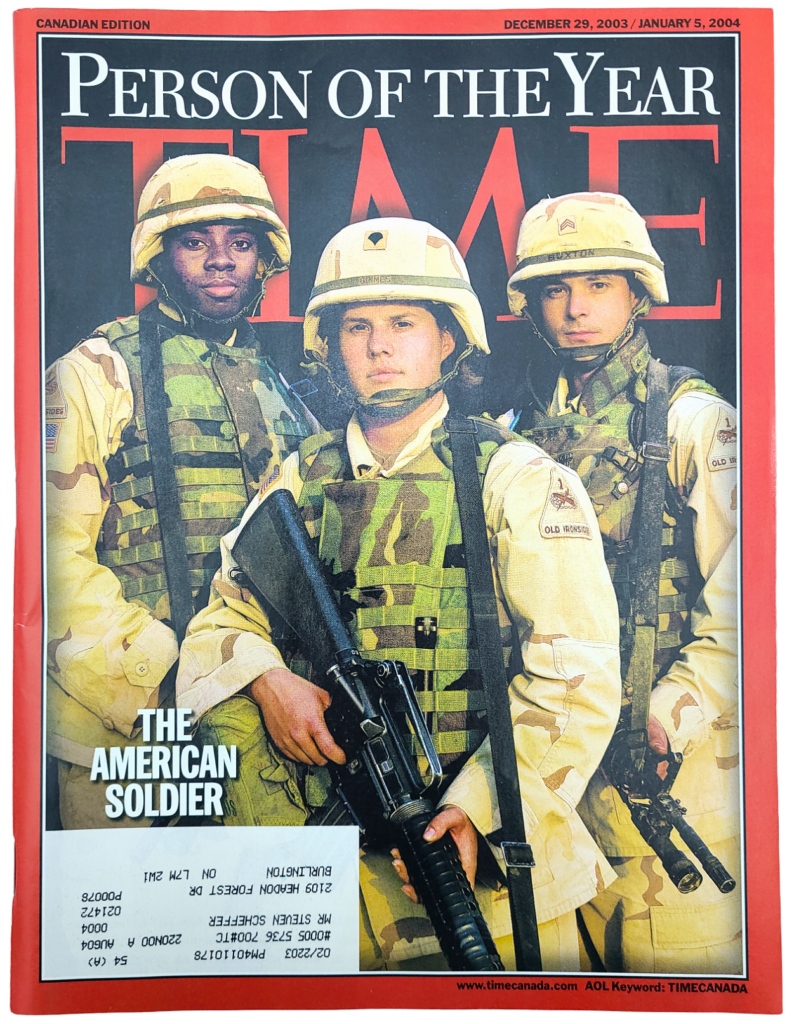
Comments are closed.